I. What are Punnett Squares and Analytical Genetics?
To make the analogy again, punnett squares are basically sudoku puzzles of genetics and molecular biology 
While being a fun biological logic puzzle, punnett squares have wide applications in the field of genetics, as they allow us to determine the probability and ratio of genotypes and phenotypes when individuals are crossed together. Most of all, they’re pretty simple once you get the hang of it!
As mentioned earlier, learning and solving punnett squares will definitely be fruitful in developing a flow of logic and reasoning skills! Likewise, tie-ins to other MCAT topics are also on full display when solving punnett as we’ll time them in going through the article.
II. Content Review
Before getting into the setup and solving of punnett squares, it might be helpful to first review basics in fertilization.
>> Fertilization Review
Recall that fertilization occurs when the sex cell gametes, sperm (male) and egg (female) cells, fuse together in order to form a zygote, resulting in the formation of an organism.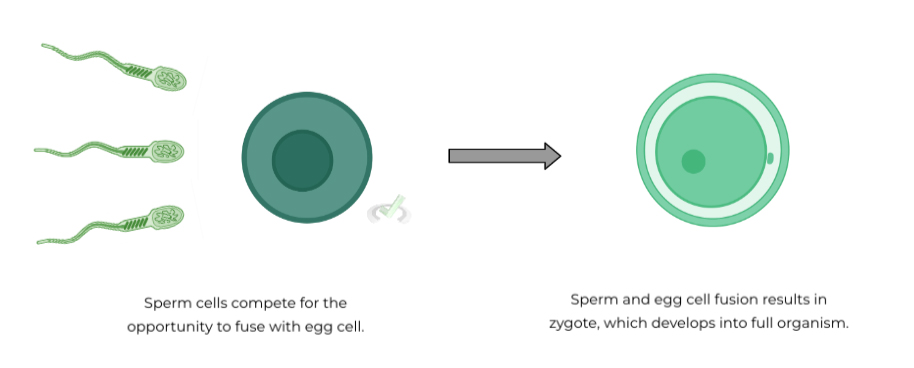
Additionally recall that gametes only contain 1 set of chromosomes – as such they are termed haploid. This is why the zygote is diploid (containing 2 sets of chromosomes), as when the sex cells fuse together, they each donate their set of chromosomes,

>> Monohybrid Cross
Let’s now get into the most basic punnett square: the monohybrid. It’s termed “monohybrid” because we’re only concerned with a single trait coded by a single gene. Take a look at the following example of how a monohybrid punnett square is set up.
In this scenario, a single gene codes for flower petal color, with the allele “B” being dominant coding for a dark green color and the allele “b” being recessive coding for a white color.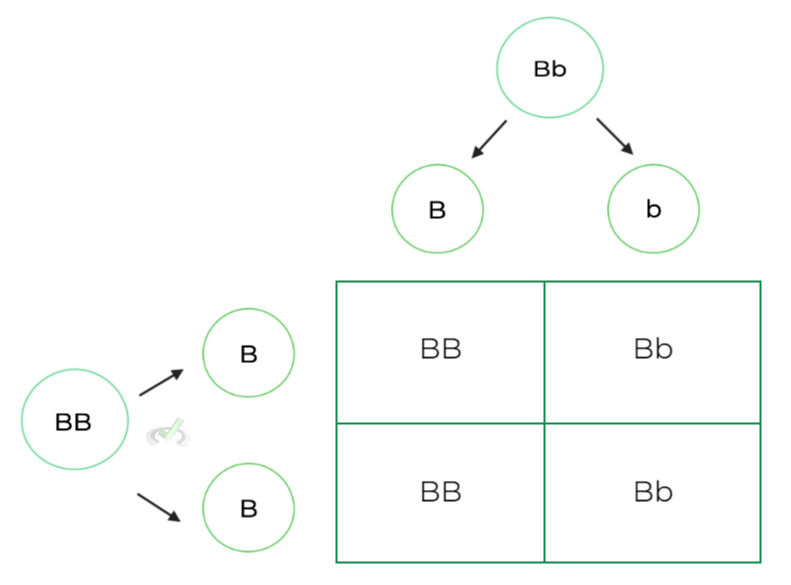
Let’s break this down bit by bit: the teal circles represent the genotypes of the parents. It doesn’t matter where the parent is placed but for simplicity let’s just say that the mother is on top and the father is on the left.
These are then broken down into the possible gametes (i.e. the sex cells – sperm and eggs). Remember they are multiple possible gametes because each sex cell will only contain 1 set of chromosomes.
Finally, the letter combinations inside the box represent the possible genotypes that can be created when the sex cells fuse and form a diploid, fully fertilized zygote!
**Note!!:
We just put the circles in for clarity so that it made is easier to explain the tie-ins with the gamete, sex cells and how they come together to from the zygote.
Most time, the punnett squares will simply have the letters on the side when setting up the diagram.
>> Dihybrid Cross
This type of cross is exactly what it sounds like! Just think of it as an extension of the monohybrid cross, except now instead of one trait/gene, we include two traits/genes.
In the example below, we have an added gene coding for flower length, where “R” is the dominant allele coding for a long flower length and “r” is the recessive allele coding for a short flower length.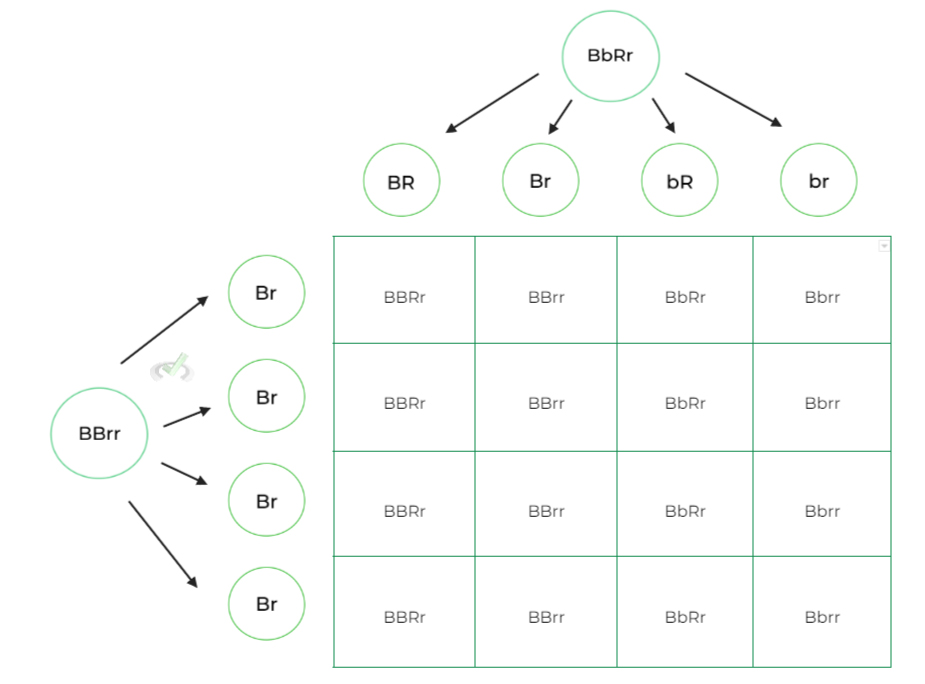
Similar to the example above, we have the maternal and paternal genotypes within the teal circles. From there, they can create the possible gamete sex cells as shown in the light green circles.
However, as you may have noticed, we now have 2 alleles in the gamete sex cells because now we’re account for 2 traits/genes.
To find the different allelic combinations of the possible gametes, we apply the foil method that you might have learned in algebra (shoutout to our algebra teachers!). Simply combine the terms in the following order: First, Outside, Inside, and Last. Consider the example below!
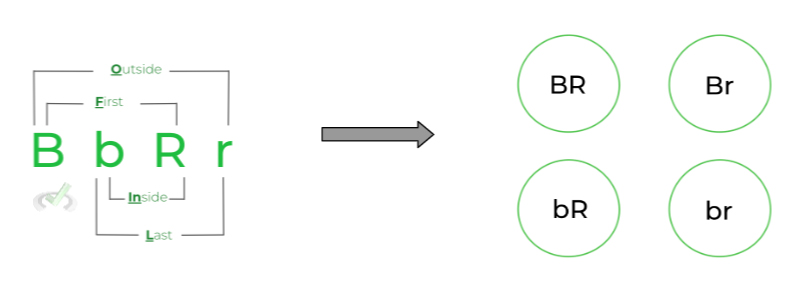
III. Bridge/Overlap
As stated above, punnett squares allow us to solve for the probability of genotypes and phenotypes of offspring if 2 parents mate. Oftentimes, you’ll be asked to solve for the genotype and phenotype ratio. Let’s look at the examples below showing the punnett squares of different expression patterns.
Just like the examples above, the gene codes for flower petal color, with the allele “B” coding for a dark green color and the allele “b” coding for a white color.
>> Complete Dominance
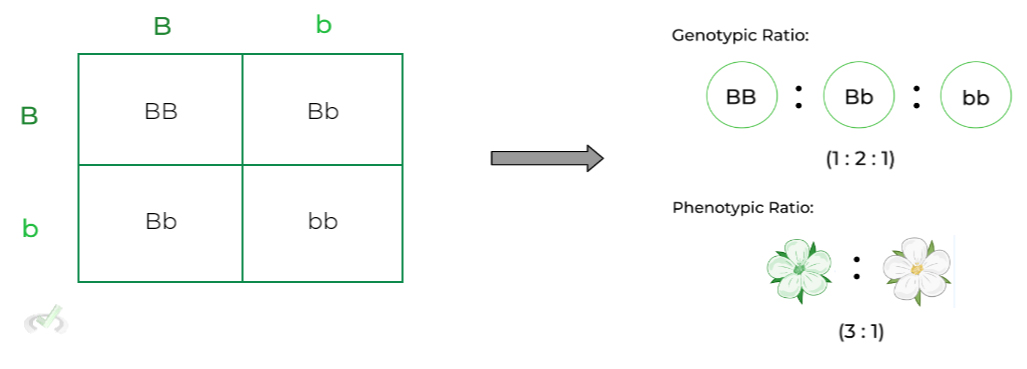
>> Codominance
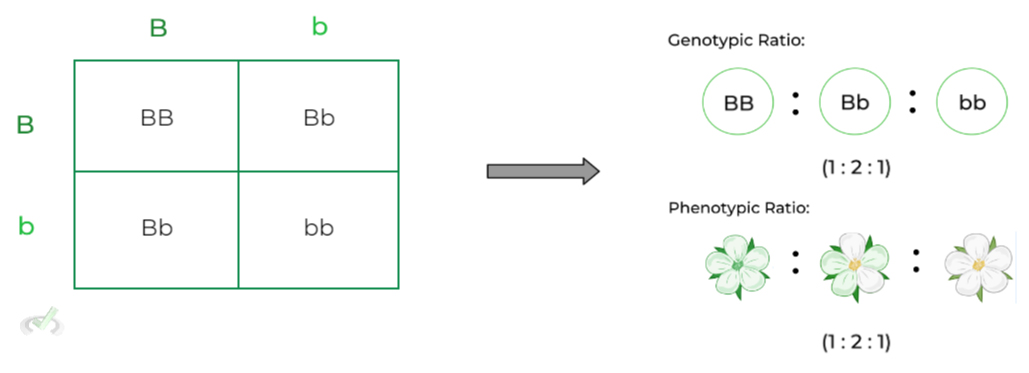
>> Incomplete Dominance
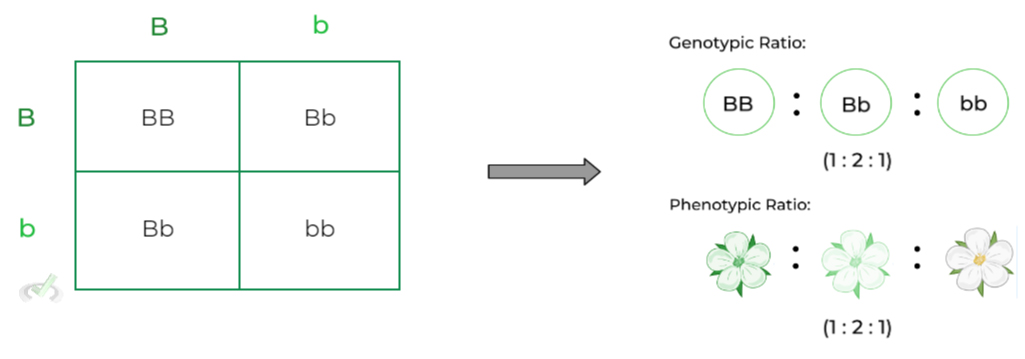
IV. Wrap Up/Key Terms
Let’s take this time to wrap up & concisely summarize what we covered above in the article!
>> Fertilization Review
Fertilization occurs when the gamete sex cells, sperm (male) & eggs (female), fuse together in order to from a zygote.
Sex cells are termed gamete (as well as haploid) becuase they only have one set of chromosomes. When the sex cells combine during fertilzation, the resulting zygote formed is diploid, containg 2 sets o chromosomes, one donated by each sex cell.
>> Monohybrid and Dihybrid Cross
A monohybrid cross is the most simple cross, where there is only 1 trait/gene of interest; a dihybrid cross is just an extension, concerning now 2 traits/genes.
When setting up a punnett square, the letter(s) that line the outside on the top and left are the possible gametes that can be formed from the paternal & maternal parents. The letter combinations on the inside represent the possible genotypes of the resulting zygote.
V. Practice
Take a look at these practice questions to see and solidify your understanding!
Sample Practice Question 1
A certain gene codes for hair length in an incomplete dominance pattern, with the “B” allele being dominant, coding for long hair and the “b” allele being recessive coding for short hair.. If the paternal genotype is BB and the maternal genotype is Bb, what is the phenotypic ratio?
A. 3 : 1
B. 1 : 2: 1
C. 1 : 1 : 1 : 1
D. Only 1 phenotype will be expressed (i.e. 100%)
Ans. A
The only possible allelic combinations for the paternal gametes is “B” while the maternal gametes can have either a “B” or “b”. After setting up and solving the punnett square the genotype will have a genotypic ratio of 3:1 {BB, BB, BB, Bb}.
Likewise, the phenotypic ratio will also be 3:1 as shown: {Long, Long, Long, Medium}. The heterozygous genotype will yield an intermediate phenotype because of incomplete dominance.
Sample Practice Question 2
Given a maternal genotype of BBrr, how many possible allelic combinations are there for the resulting gametes?
A. 1
B. 2
C. 3
D. 4
Ans. A
Although this is an example of a dihybrid cross, when using the FOIL method, the only possible allelic combination for the gamete sex cells will be “Br”; hence, there is only 1 possible allelic combination.







 To help you achieve your goal MCAT score, we take turns hosting these
To help you achieve your goal MCAT score, we take turns hosting these 





















 reviews on TrustPilot
reviews on TrustPilot